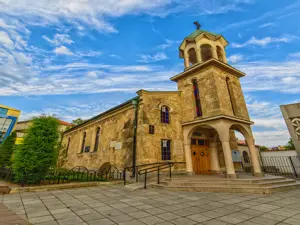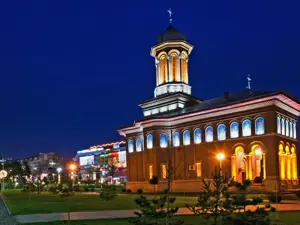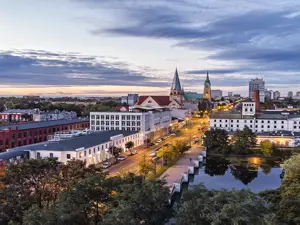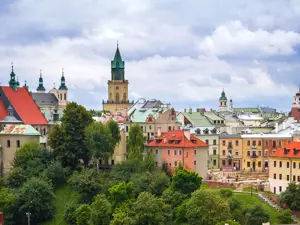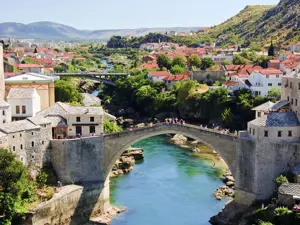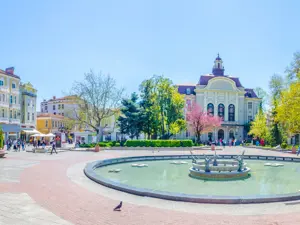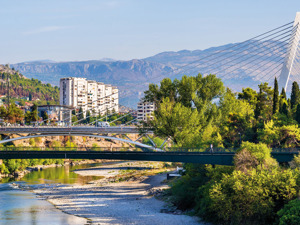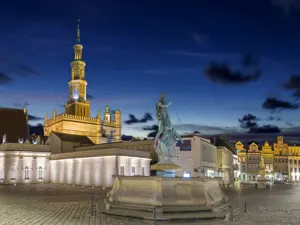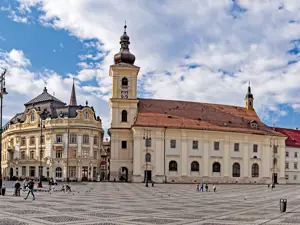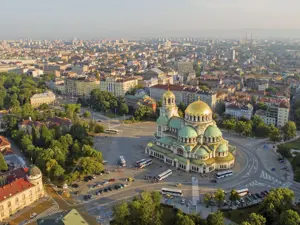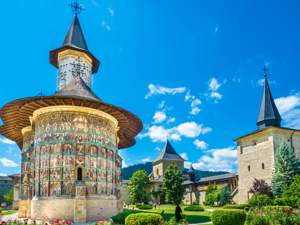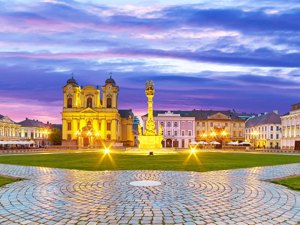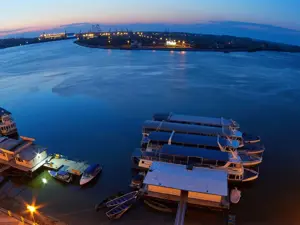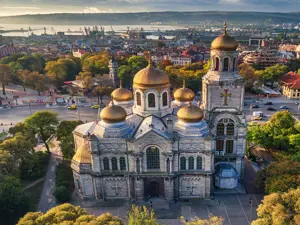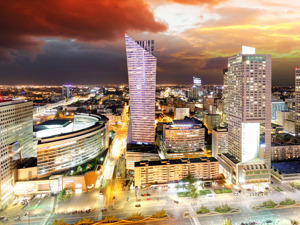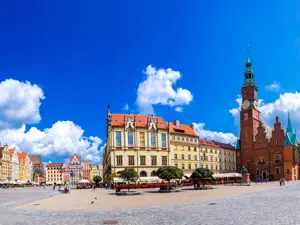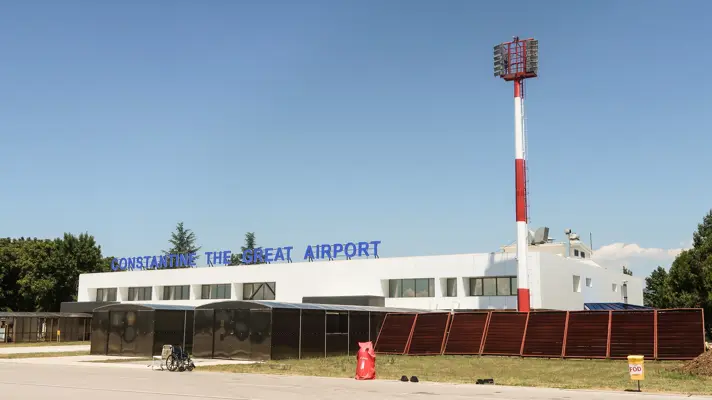The gateway between East and West
Nis, somewhat off the beaten tourist trail, is however well worth visiting. It offers some wonderful surprises because it is one of the most important and bustling cities of Serbia, with a long and legendary historical past. Suffice it to say that in 274 AD the Roman Emperor Constantine the Great was born here (famous for having issued the Edict of Milan in 313, the first edict concerning religious tolerance) and it is precisely after this esteemed figure that the airport is named, the Konstantin Veliki Aerodrom.
The myth of the emperor still lingers in the city after centuries: in the Roman archaeological dig of Mediana – a luxury complex including a villa that seems to have been the emperor’s ‘buen retiro’ outside the city – in the churches of various denominations erected by the emperor, in the solemn celebrations held each year on 3 June, the day of his sanctification in the orthodox church, and lastly, in the numerous images that show him almost always together with his devoted mother, the Queen Elizabeth.
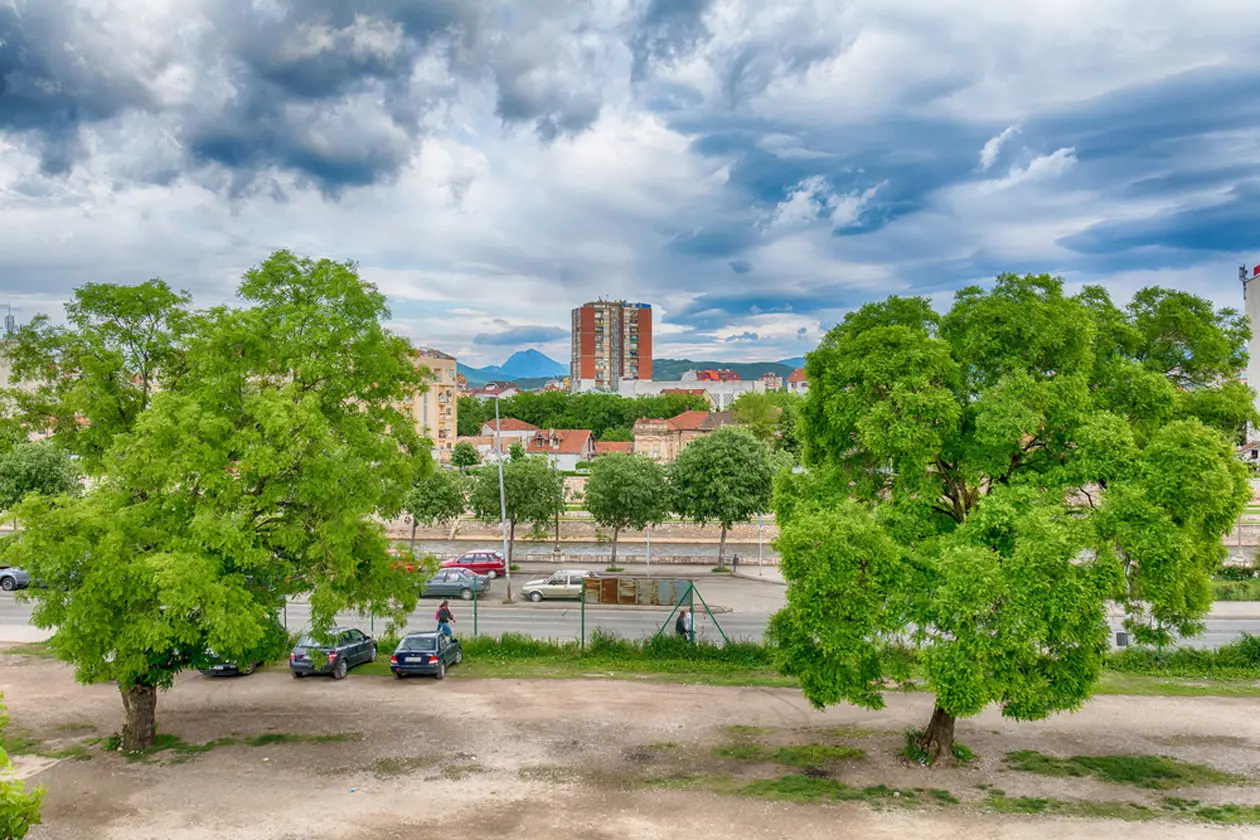
The subsequent and most recent Turkish presence is evidenced by the Fort of Stara Planina dating back to the eighteenth century, the most beautiful Turkish post in the Balkans, situated in the national park of the same name, which is extremely well kept and well worth visiting. Turkish presence can also be seen in the unsettling Cele Kula, Skull Tower, constructed by the Turks in 1809 with the skulls of the conquered Serbs as a warning to the rebels.
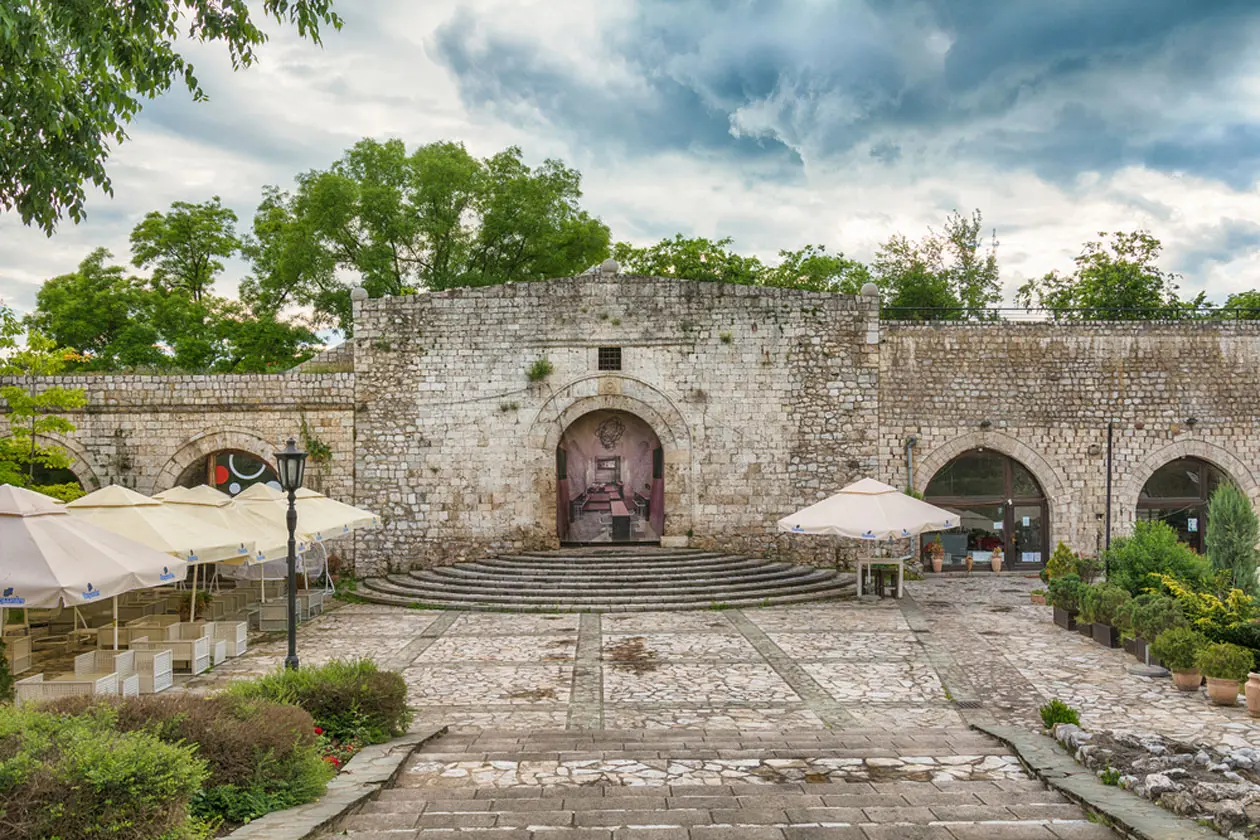
Today Nis is a lively city with an industrial and artistic fervour, and vast parks, museums and galleries that illustrate its past. The imposing Banovina Palace stands in the centre of the city. Constructed in 1886 as the seat of the Government, it today houses the University, Chamber of Commerce and many other institutions, as well as being a congress venue. It was here that in 1914 Serbian officials received the telegram from Austria-Hungary declaring war on Serbia following the assassination of the Archduke Franz Ferdinand, heir to the throne, by a Serbian nationalist, which led to the start of the First World War. Memories of more recent persecutions, during the Second World War, can be found in the Anhaltelager Concentration Camp and in Bubanj Park.
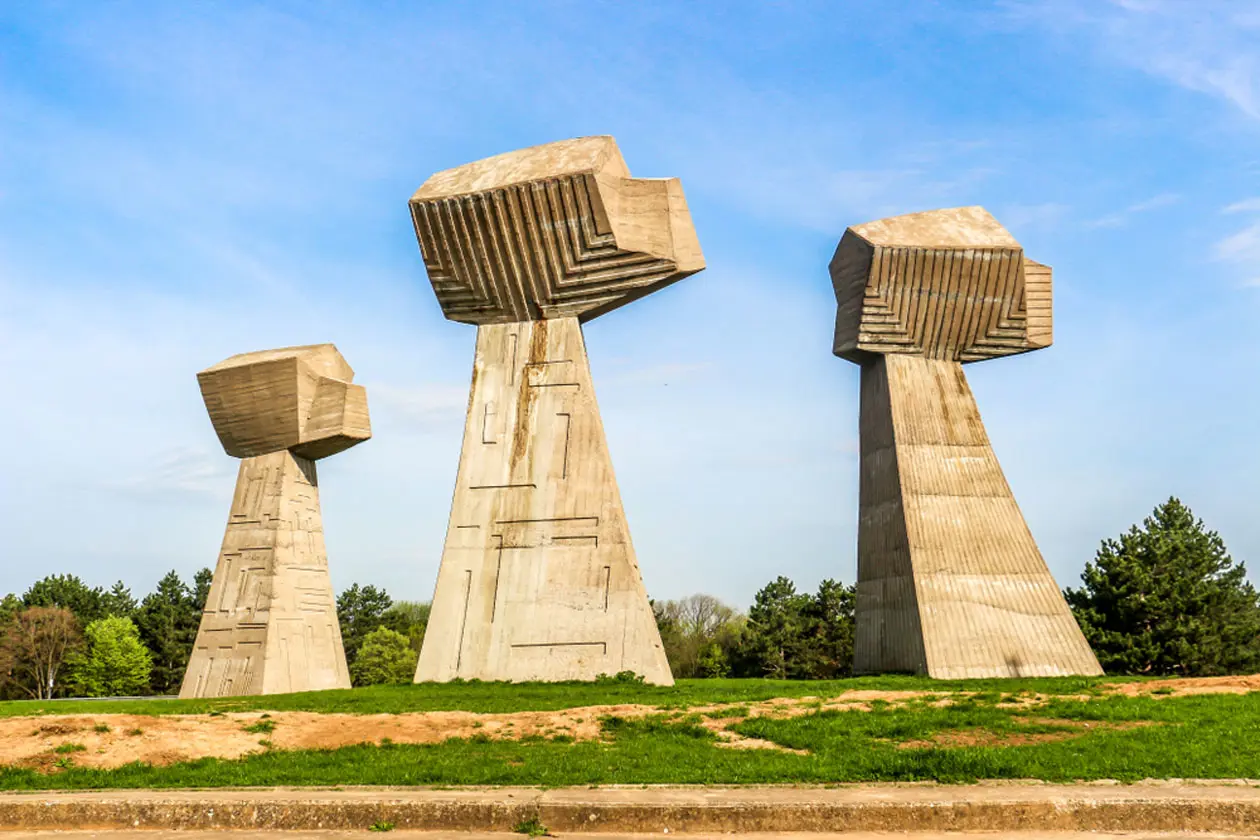
There are some twenty churches and monasteries, including the beautiful Orthodox Cathedral built in Byzantine Serbian style, the Church of the Saints Archangels Michael and Gabriel, the Monastery of the Holy Mother of God, and the Monastery of Saint Petka Iverica, to name but a few.
Over the course of the centuries Nis has inspired poets, writers, musicians, painters, travellers and bohemians for its unique monuments, beautiful countryside, and the lively southern spirit of the people.
Situated in the south-east of Serbia, in the centre of the Balkan Peninsula, since ancient times the city has been considered a gateway between East and West, but it was also the destination of excursions for people living nearby because of its beauty and that of the surrounding area. Its name is derived from poetic legends: the first inhabitants were Celtic tribes who were often attacked and pillaged by neighbouring populations, until they decided to pray to their gods for their freedom. The gods sent a multitude of fairies who settled in both the “fairy” river, in Slavic Naisa, and in the “fairy” town, Navissos, which in Slavic became Nais.
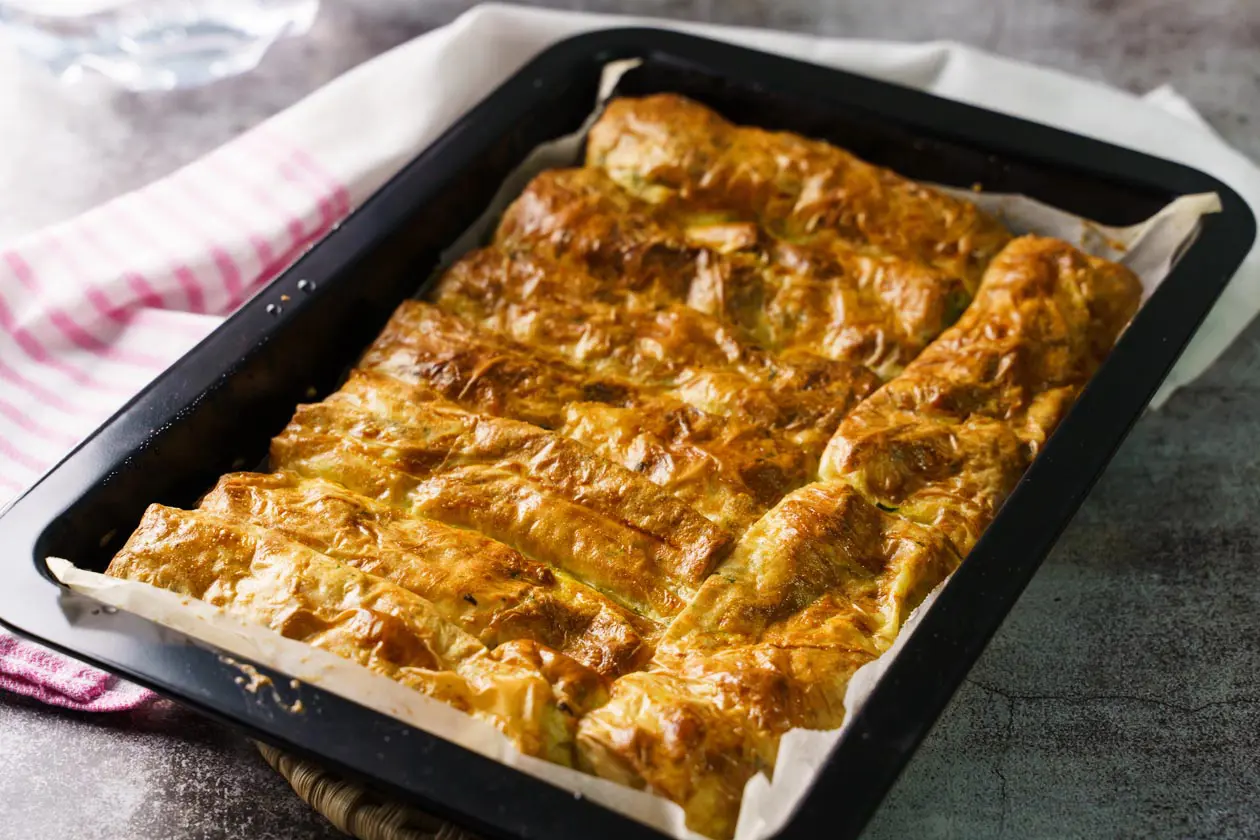
Serbian cuisine
Even the local cuisine pampers with its succulent, tasty dishes made of spices, meat broth, courgettes, spinach, mushroom, tomatoes. The national dish is pasulj, a spicy soup of white beans, and srpska gibanica, a delicious dish of puff pastry filled with fresh cheese.
An ideal way to conclude a tour is to visit, in the east of Nis, the famous thermal waters of Niska Banja, which have been known since ancient times for their extraordinary healing properties that pamper and heal body and mind.
Text by Anna Glik
Reproduction reserved.
Tourism Board
www.visitnis.com
www.serbia.travel
Partnership with Booking.com
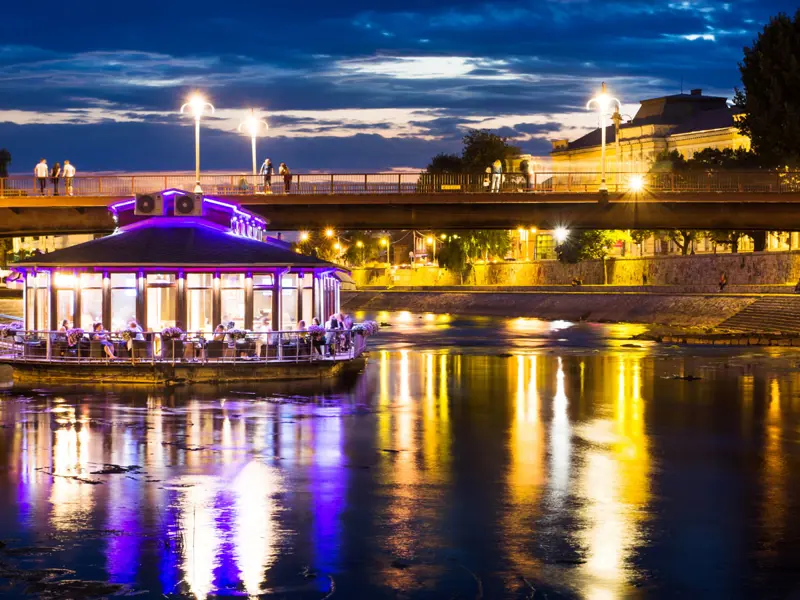
Where to sleep in Nis
Nis is a welcoming city and offers different possibilities for accommodation.
To find the ideal hotel and the best offers you can do a search for the stars but also for districts or landmarks.
STARS
Hotels for stars, differentiated by type of services:
WHERE TO GO IN NIS
Monuments of Nis
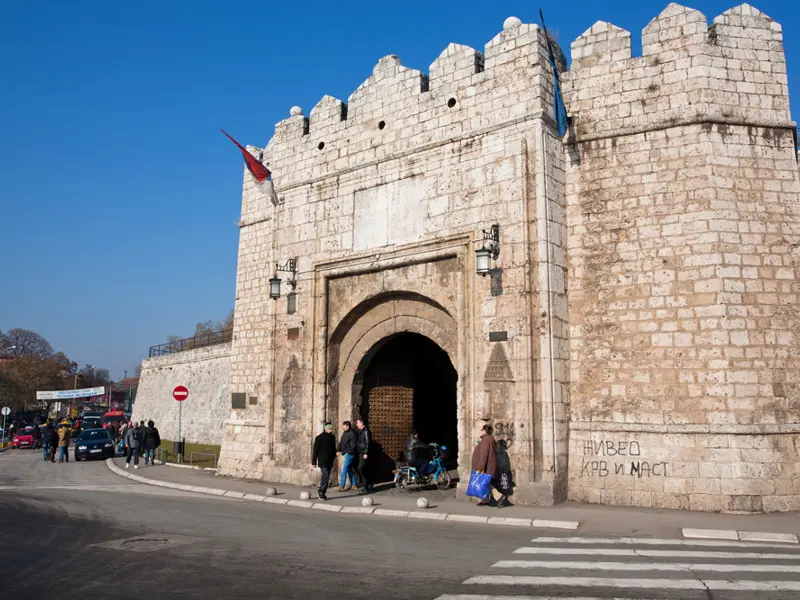
TURKISH FORTRESS OF NIS
The fortress dominates the city with its robust tower in the form of an irregular polygon and imposing entrance gate, traces of Turkish domination which began here in 1386 and lasted almost 5 centuries. The building, which dates back to the eighteenth century, has a bridge connecting it to the city centre. Well worth visiting are the old prison cells and gunpowder magazine.
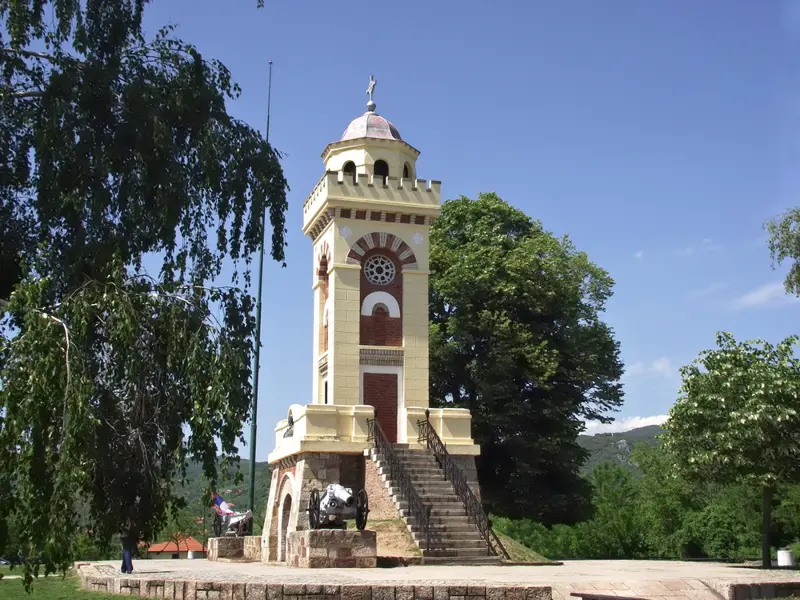
CEGAR MONUMENT, SKULL TOWER
This building remembers the battle of Cegar in 1809, when the Serbs rebelled against the Turks, leading to a defeat: the legendary commander Stevan Sindelic blew himself and his men up, setting fire to the gunpowder magazine to prevent it falling into the hands of the enemy. A three-metre-high tower was built in remembrance of this heroic gesture and, low down in a niche, is the bust of the national hero. Nearby is the Cele Kula, Skull Tower, which contains the remains of the Serbs decapitated en masse by the Turks, who preserved them as a warning to the local population.
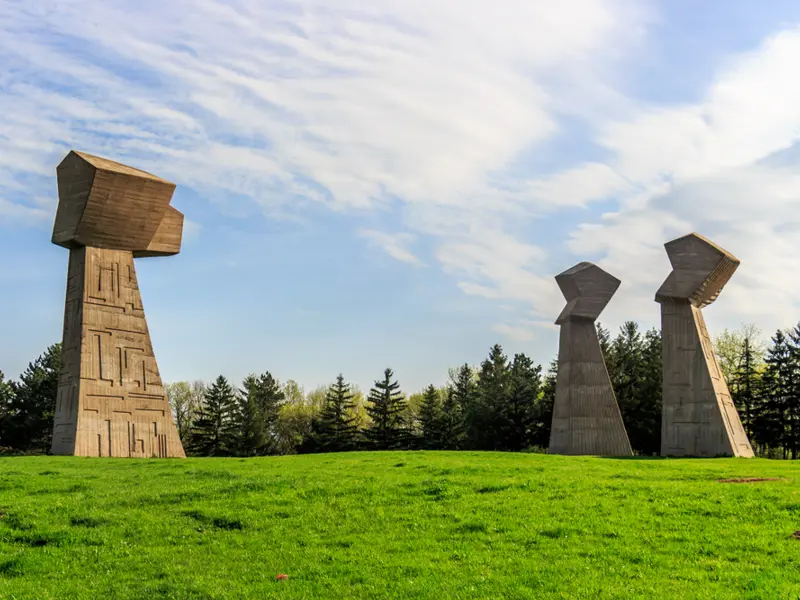
BUBANJ MEMORIAL PARK
The monument, situated on a hill 3 kilometres from the city, is dedicated to the 10,000 victims of the Nazis, who set up the Crveni Krst concentration camp along road leading to the highway to Belgrade. It was built in memory of one the largest massacres of the war, which was ordered by the head of the Gestapo Himmler. This unique monument by the Croatian sculptor Ivan Sabolic takes the shape of three monumental fists, which symbolise the sufferance of humanity, but also of defiant resistance and refound freedom after the end of the Second World War.
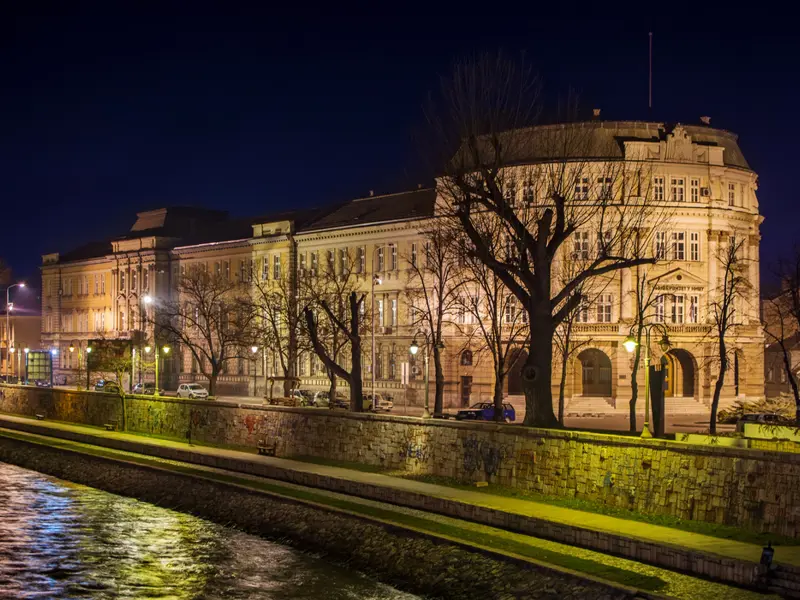
BANOVINA
On the right-hand side of the River Nisava is one of the most beautiful and historic palaces of Nis. Built in 1889 in neo-Renaissance style and once seat of the Government, it now houses the University and Congress Centre.
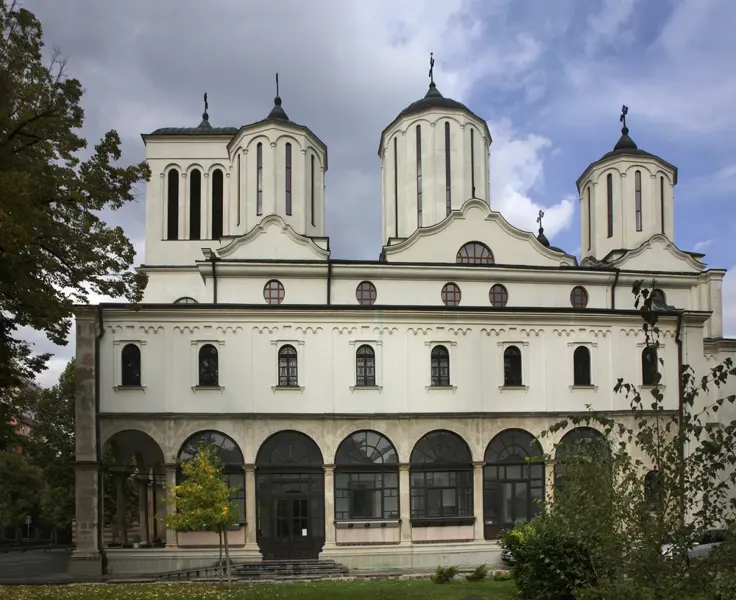
ORTHODOX CATHEDRAL OF NIS
The Orthodox Cathedral, built between 1856 and 1872 and consecrated to the Descent of the Holy Spirit on the Apostles, is a striking example of Serbian-Byzantine art, with elements of Baroque and oriental Renaissance. Consecrated as a church after liberation from the Turks in 1878, it was destroyed by a fire in 2001, but has been faithfully restored. It features a large artistic iconostasis, a traditional theatrical element in orthodox churches that separated the central nave from the area where mass was celebrated.
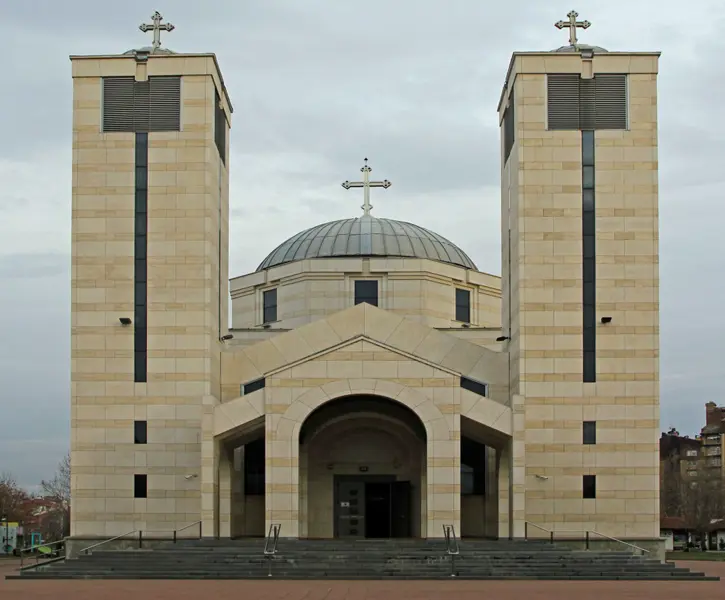
CHURCH OF THE HOLY EMPEROR CONSTANTINE AND EMPRESS HELENA
Celebrations take place here on 3 June for the Emperor and his mother Helena, who is also a saint in the Catholic Church. All religious, artistic and cultural events are organised from this church on this important date for the inhabitants of Nis.
MONASTERY OF SAINT PETRA IVERICA
This was founded by monks from the Iveron Monastery of Mount Athos, from whom the monastery took its name.
MONASTERY OF THE HOLY VIRGIN
This striking place was built ex voto by the Serbian army following a miracle: when news arrived King Alexander I Obrenovic was saved from drowning in the Sea of Biarritz, the faithful servicemen decided to build the church at the foot of the rocky hill of Kusaca. The complex is made up of a church – worth while visiting for its seventeenth-century iconostasis – monastery and gardens. It is an interesting place and unique among all monuments of the Orthodox Church.
Museums of Nis
MEDIANA
This is an important Roman archaeological site on the left-hand bank of the river, which covers approximately 40 hectares of land along one of the more renowned and strategic roads of ancient times, Via Militaris. Once the holiday place of emperors and notable court figures, it comprises villas with porticoes and fountains, decorated with mosaics and geometric motifs or with mythological figures. The main villa is decorated with a magnificent peristyle (series of columns edging a courtyard). Nearby is the Archaeology building of the National Museum, which houses finds from the Roman era from ancient Nis and its suburbs: coins, statues, frescoes, objects associated to a very popular betting game of the era, and items from everyday life, as well as a copy of Constantine’s portrait.
NIS NATIONAL MUSEUM - ARCHAEOLOGY ROOM
The Archaeology Room of the Nis National Museum houses artefacts that illustrate the history and culture of the city. It preserves: Roman money, military cards, statues, tombstones, remains of the border around the Roman villa of Mediana, medieval jewels, stone icons and crosses. The room also contains unique works of art, such as a copy of the portrait of the emperor Constantine, a sculpture of Jupiter on a throne and a portrait of the Byzantine Theodora/Euphemia.
Excursions in Nis
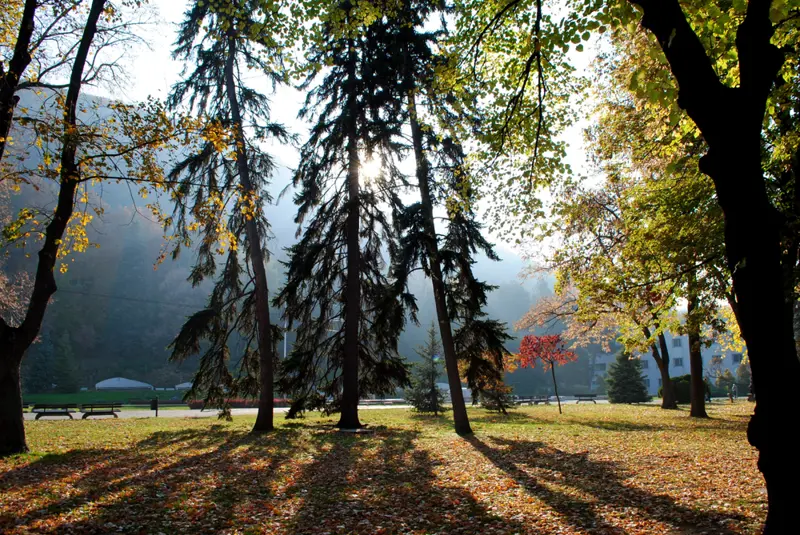
SPA TOWN OF NISKA BANJA
A few miles from Nis is the spa town of Niska Banja, which has been known since ancient times for the properties of its waters, a remedy for high blood pressure, heart problems and rheumatism, and where visitors are pampered with relaxing massages carried out using chocolate and cinnamon.
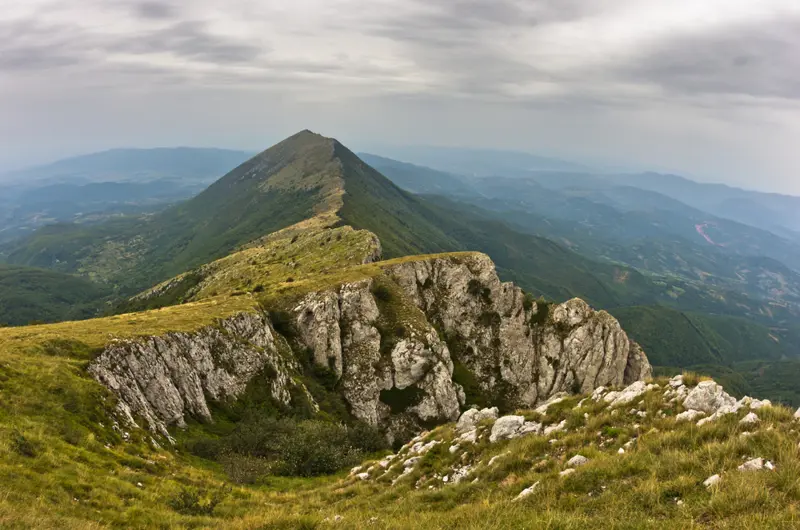
SUVA PLANINA
A tour of the so-called Southern Alps of Serbia or Suva Planina, 15 kilometres to the east of Nis, will envelop visitors in infinite calmness. A perfect place for relaxation, the unique countryside is also considered a site of biodiversity, and numerous plants and animals – particularly birds – are found only here. It is particularly recommended for lovers of mountaineering and winter sports.
Partnership with GetYourGiude
All tours and excursions
You might be interested in
Destinations found in the vicinity
Other destinations
Airports nearby Nis




